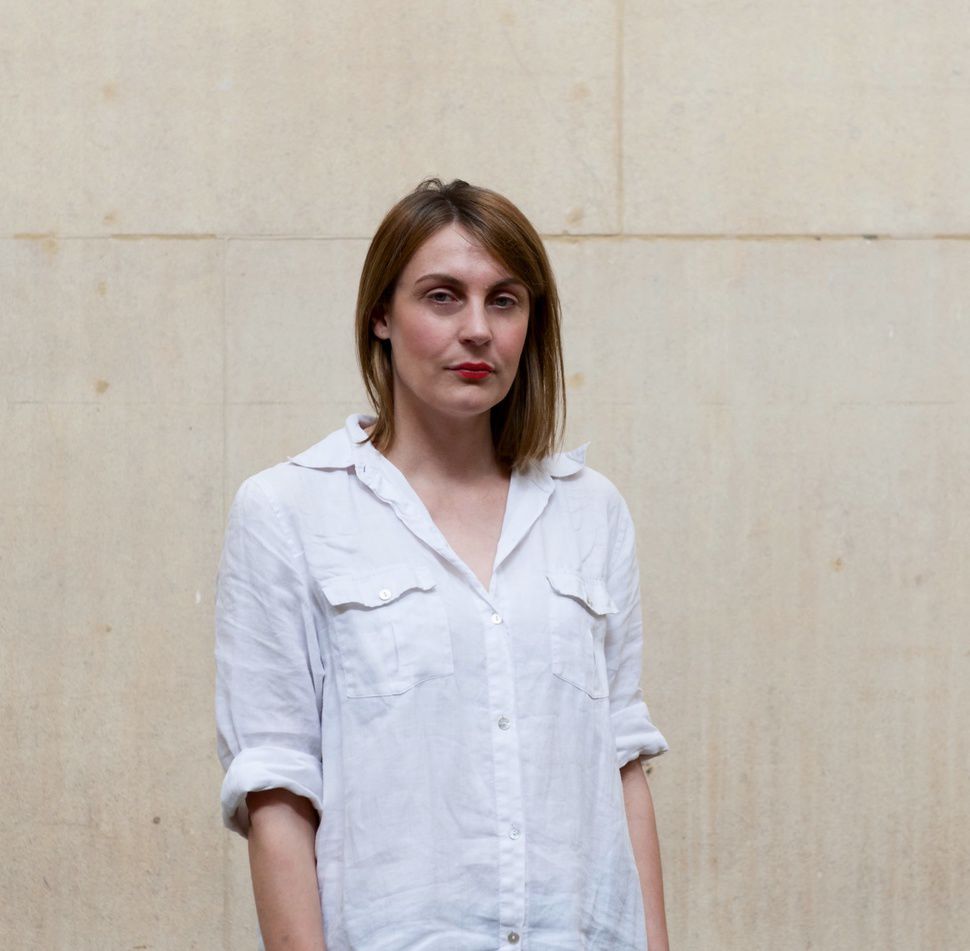
Fellows on the Move: Inga Fraser Mobius is a fellowship programme organised by the Finnish Institute in London and the Finnish Cultural Institute in New York that enables mobility for visual arts, museum and archives professionals. In the Institute’s new series of interviews the fellows compare the different circumstances and practices between their sending and receiving cities.
The Finnish Institute in London interviewed one of the participants of the programme, assistant curator of Tate Britain, Inga Fraser, about art and mobility.
Q: Could you briefly describe the work you do at TATE Britain and what you will do in Finland? Why are curatorial fellowship programmes like Mobius important?
A: I am one of a team of curators working on acquisitions, collection research, displays and exhibitions of Modern British art. Most recently I have worked with Chris Stephens (Lead Curator of Modern British Art and Head of Displays) and Penelope Curtis (Director, Tate Britain) on a major retrospective exhibition of work by the sculptor Barbara Hepworth (1903-1975). In Finland I will be based at the Ateneum and focused on researching the provenance of a number of British artworks in the Finnish National Collection. Understanding how these works came to be acquired is a way of exploring links between artists, dealers, gallerists and scholars in the first half of the twentieth century, looking at British art from the outside in, as oppose to focusing on activities occurring within the country. Curatorial fellowship programmes like Mobius are so important precisely because they facilitate this change of perspective.
Q: You are interested in investigating the impact of British art in Finland – are there generally big differences in how British art is received abroad and how it’s received domestically? What would you say some of those differences are?
A: Inevitably there is wider recognition of British art and artists in the UK. Abroad, such recognition varies considerably. In the modern period, certain artists took a great deal of interest in developments on the continent. Barbara Hepworth and Ben Nicholson, for instance, travelled to France often in the 1930s, meeting artists such as Piet Mondrian, Georges Braque and Alexander Calder. They joined international groups dedicated to the promotion of ‘abstract’ art such as ‘Abstraction-Création’, and their work featured in joint publications and exhibitions, consequently exposing a wider audience to their work. By means of contrast, other members of the British modern movement, such as Vanessa Bell and Duncan Grant are celebrated in England but hardly known elsewhere. Whereas Hepworth and Nicholson engaged with ideas from the continent such as constructivism, Bell and Grant are more associated with a particularly English aesthetic.
Q: Are there any specific British artists or artworks in the Finnish collections you would like to investigate further?
A: The Finnish National Collection contains a number of modern British prints, paintings and sculpture, by diverse artists including William Strang, William Nicholson, Roger Fry, Duncan Grant, Graham Sutherland, Ben Nicholson, Henry Moore, Francis Bacon and Victor Pasmore, as well as more recent works by David Hockney, Allen Jones, Anthony Caro, Ron Kitaj, John Hoyland, Richard Long, Tony Cragg and Richard Deacon. Some of these figures have more prominence in the public imagination than others but with all I want to find out how these works have been acquired and exhibited in a Finnish context.
Q: Part of your research interests is British art abroad during the period of 1890-1945. Could you explain why this period was important for the emerging international art field?
A: The twentieth-century brought increasing opportunities for artists and scholars to travel, and the exchange of ideas that followed is one of the keystones of modernity. This period also sees the birth of the global art market as we know it today and the transactions between artists, dealers, collectors, keepers and scholars are reflected in the shape of national collections accumulated at that time, and still influence our understanding of art today.
Q: Speaking of art in an foreign context – are artists always forced to conform to national types, i.e. is British art interpreted in the framework of ‘Britishness’ in an international context? Are artists still haunted by their nationality in this sense?
A: National stereotypes can influence how an artist is interpreted abroad, but such ideas are always subtly different because of the changing social, political and geographic context in which they are formed or applied. So I wouldn’t describe artists as being ‘haunted’ by their nationality, as it’s a less monolithic concept than may initially be assumed. Additionally, the global networks of production, display and sale in the art world currently, mean that national groupings – at least in relation to contemporary art – hold less sway than they used to. It may make more sense to speak of ‘local’ rather than ‘national’ groupings.
Q: How do you think Finnish art is perceived in the UK? Is there a Finnish artistic “brand” at the moment?
A: In the first half of the twentieth century, figures such as Alva Aalto featured prominently in the minds of modernists seeking collaboration between painters, sculptors, designers and architects. His designs were reproduced in the 1937 publication Circle: International Survey of Constructivist Art, edited by Ben Nicholson, Naum Gabo and J.L. Martin, for instance; and patrons such as Maire Gullichsen, who spent time abroad, also served to promote Finnish art more widely. Today, contemporary Finnish artists such as Visa Suonpää and Patrik Söderlund continue to draw on this modernist heritage, for instance in their installation at Venice this year, which uses Aalto’s pavilion as a starting point from which to explore current concerns about industry and diversity in Finland and further afield.
